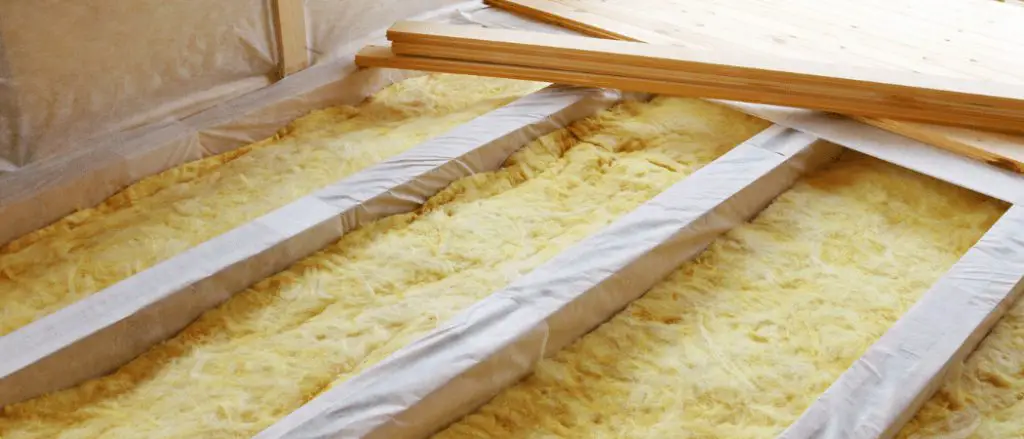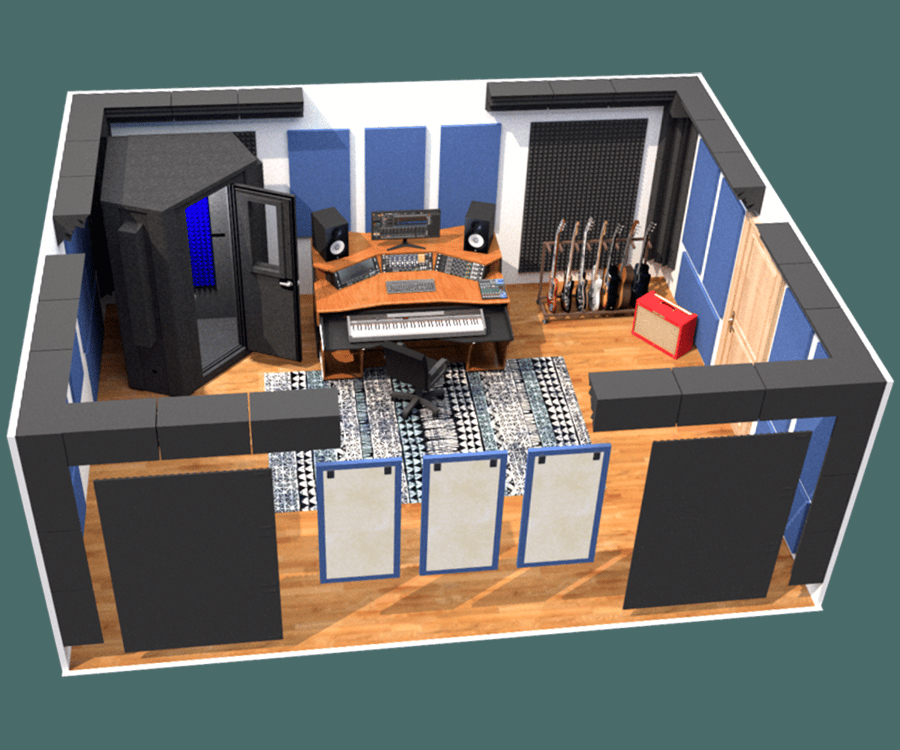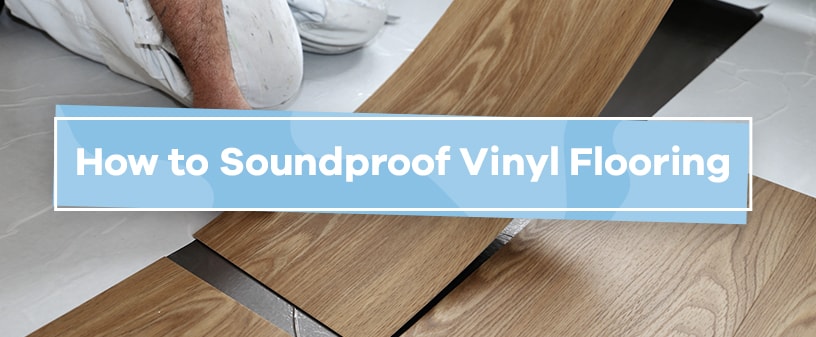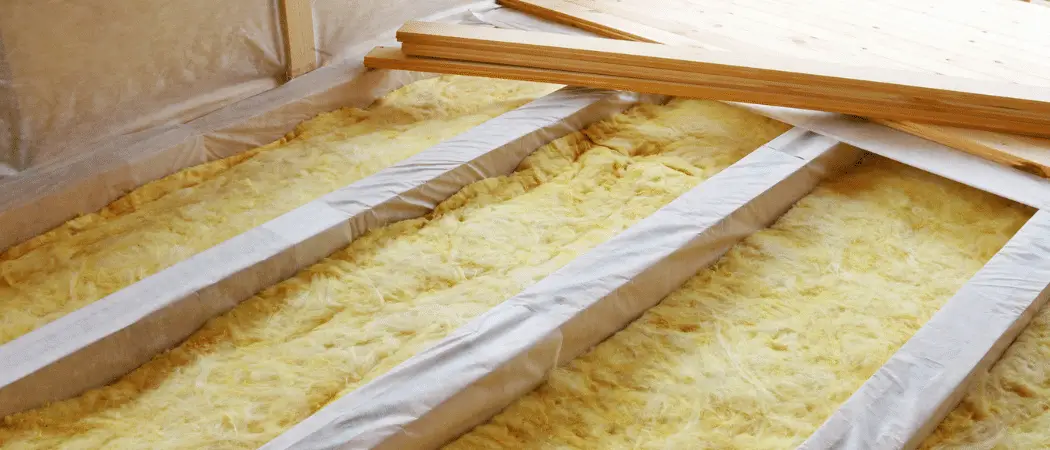To soundproof a floor, install underlayment and padding beneath the flooring and use soundproof mats or rugs as additional layers. Soundproofing a floor is essential for reducing noise transmission between different levels of a building, creating a quieter and more comfortable environment.
By following effective soundproofing techniques, you can minimize impact noise, footsteps, and other disturbances, enhancing the overall acoustic quality of your living or working space. Soundproofing materials like acoustic underlayment, soundproofing mats, and carpets can absorb and dampen sound vibrations, preventing them from traveling through the floor structure.
With proper soundproofing measures in place, you can enjoy a more peaceful and noise-free atmosphere in your home or office.

1. Understanding Soundproofing
Soundproofing a floor is a technique used to reduce the transmission of sound from one room to another. By implementing effective soundproofing measures, you can create a more peaceful environment in your home or office, minimizing noise disruptions and ensuring privacy. Understanding the basics of soundproofing is crucial before you embark on any floor soundproofing project. In this section, we’ll explore what soundproofing entails and why it is necessary.
1.1 What Is Soundproofing?
Soundproofing involves implementing various methods and materials to prevent sound from passing through walls, floors, or ceilings. This is achieved by disrupting the transmission of sound waves, reducing the impact of outside noise and limiting the sound that escapes a particular room.
When it comes to soundproofing a floor, the primary objective is to create a barrier that prevents sound from traveling below or above it. By using specific techniques and materials, you can improve sound insulation and create a quieter space.
1.2 Why Soundproof A Floor?
There are several reasons why soundproofing a floor is a worthwhile investment:
- Reduced Noise: A soundproofed floor helps to minimize the impact of footsteps, voices, or any loud noise generated in one room from disturbing others in adjacent rooms or floors.
- Improved Privacy: Whether you have a home recording studio, an office space, or want to create a peaceful living area, soundproofing your floor ensures a quieter and more isolated environment, enhancing privacy.
- Enhanced Sleep Quality: If you have bedrooms above or below each other, preventing noise transfer between the two floors can significantly improve sleep quality.
- Increased Property Value: Soundproofed floors are considered a desirable feature when selling or renting out a property, making it more attractive to potential buyers or tenants.
By understanding why soundproofing is necessary, you can make informed decisions about the soundproofing methods and materials to use for your floor. In the following sections, we’ll delve deeper into the practical steps you can take to effectively soundproof your floor.

Credit: www.hgtv.com
2. Assessing The Noise Problem
When soundproofing a floor, assessing the noise issue is crucial for effective solutions.
2.1 Identifying The Source Of Noise
Determine where the noise is coming from to address the root cause.
2.2 Measuring Noise Levels
Quantify noise levels to understand the intensity of the problem.
3. Soundproofing Techniques For Floors
When it comes to soundproofing your floor, there are several effective techniques to consider. Whether you want to reduce impact noise from foot traffic or minimize sound transmission between floors, these soundproofing methods can make a significant difference in creating a quieter and more peaceful environment in your home or office.
3.1 Insulating The Floor
Insulating your floor is a fundamental approach to soundproofing. By adding a layer of insulation material between the subfloor and finish floor, you can effectively dampen impact noise and reduce sound transmission. Common insulation materials include fiberglass, cellulose, and foam boards, which provide excellent sound-absorbing properties.
3.2 Using Mass Loaded Vinyl
Mass loaded vinyl (MLV) is a dense, flexible material that is highly effective in blocking airborne and impact noise. By installing MLV under your finish floor, you can create a barrier that prevents sound from passing through the floor structure. This heavy-duty soundproofing material is particularly suitable for controlling low-frequency noise and vibrations.
3.3 Installing Acoustic Underlay
Acoustic underlay is designed to minimize the transmission of impact noise and create a quieter indoor environment. It is typically made of sound-absorbing materials such as rubber, cork, or foam, and is placed beneath the finish floor to cushion footfall noise and reduce reverberations. Acoustic underlay also helps to improve insulation and thermal properties of the floor.
3.4 Sealing Gaps And Cracks
Sealing gaps and cracks in the floor structure is crucial for preventing sound leaks and ensuring effective soundproofing. Use caulking or acoustic sealant to seal any openings or joints in the subfloor, ensuring that there are no pathways for sound to travel through. Additionally, consider adding weather-stripping to door frames to further enhance sound insulation.

Credit: whisperroom.com
4. Soundproofing Materials And Products
When looking to soundproof a floor, choosing the right materials and products is crucial. There are various options available to effectively reduce noise transmission and create a quieter environment in your home. Let’s explore some popular soundproofing materials and products:
4.1 Soundproofing Foam
- Acoustic foam: Absorbs sound waves and reduces echoing.
- Installation: Easily cut and installed on floors for effective soundproofing.
4.2 Soundproofing Mats
- Mass-loaded vinyl mats: Dense mats that block sound transmission.
- Underlayment: Helps reduce impact noise from footsteps on the floor.
4.3 Soundproofing Paint
- Noise-reducing paint: Applied like regular paint to walls or floors to dampen sound.
- Sound-blocking properties: Creates a barrier to prevent noise penetration.
5. Diy Vs. Professional Installation
5. DIY vs. Professional Installation
Deciding whether to opt for a do-it-yourself (DIY) approach or seek professional installation for soundproofing your floor is a crucial decision. Consider the pros and cons of each method to make an informed choice.
5.1 Pros And Cons Of Diy Soundproofing
DIY soundproofing offers cost savings and empowers homeowners to customize the process according to their preferences. However, it requires time, effort, and a thorough understanding of soundproofing techniques.
- Pros
- Cost-effective
- Customizable
- Cons
- Time-consuming
- Requires expertise
5.2 Hiring A Professional
Engaging a professional for soundproofing installation ensures precise execution and eliminates the need for extensive DIY knowledge. It allows homeowners to relax while experts handle the project with efficiency.
6. Additional Tips For Effective Soundproofing
When it comes to soundproofing a floor, incorporating additional strategies can enhance the overall effectiveness. By following these tips, you can significantly reduce the noise transmission within your space.
6.1 Using Rugs And Carpets
If you’re looking for a quick and budget-friendly solution, consider using rugs and carpets to minimize sound vibrations. These soft floor coverings not only add aesthetic appeal but also act as effective sound absorbers. By placing rugs strategically in high-traffic areas and near sources of noise, such as speakers or appliances, you can create an extra layer of insulation, reducing both impact and airborne sound. Choose thick, densely woven materials for maximum soundproofing benefits.
6.2 Arranging Furniture Strategically
Believe it or not, the way you arrange your furniture can impact sound transmission in your space. By strategically placing large furniture items like bookshelves, sofas, or cabinets along the walls, you can create sound barriers that help absorb and deflect noise. Additionally, placing furniture away from direct contact with the floor, by using rubber pads or felt gliders, can further minimize vibrations that travel through the floor. Experiment with different furniture arrangements to find the most efficient layout for soundproofing.
6.3 Soundproofing Window Treatments
Windows are a common source of noise leakage, especially if they are single-pane or don’t have proper seals. Incorporating soundproofing window treatments can make a significant difference in reducing external noises. Consider using heavy curtains made from sound-absorbing materials like velvet or wool. Another option is installing window inserts or seals that create an airtight barrier, minimizing sound transmission. Remember, a combination of these treatments ensures maximum effectiveness in keeping unwanted noise outside.
7. Common Mistakes To Avoid
To soundproof a floor effectively, avoid common mistakes such as neglecting proper insulation and using insufficient materials. Ensure to seal any gaps and cracks, and consider adding a soundproof underlayment before installing the flooring. Additionally, using thick rugs and carpets can further minimize sound transfer.
Nailing the art of soundproofing a floor can be a game-changer in creating a quiet and peaceful living space. However, there are common mistakes that many people make when attempting to soundproof their floors. By avoiding these mistakes, you can ensure maximum effectiveness in reducing noise transmission and achieving the desired soundproofing results. In this section, we will highlight two crucial mistakes to avoid in your soundproofing project: neglecting the ceiling and walls, and not considering impact noise.
7.1 Neglecting The Ceiling And Walls
When it comes to soundproofing a floor, it’s easy to focus solely on the floor itself. However, neglecting the ceiling and walls can greatly undermine your efforts. Sound waves can easily travel through these surfaces, even if your floor is well-insulated. To achieve optimal soundproofing, it’s important to address the ceiling and walls as well.
Here are some key steps to consider:
- Install acoustic panels or foam on the ceiling and walls to absorb sound waves.
- Seal any gaps or cracks in the walls and ceiling using acoustical caulk or sealant.
- Add mass to the walls by using extra drywall or Mass Loaded Vinyl (MLV) to block sound vibrations.
- Consider adding a layer of Soundproofing Insulation to the walls for added noise reduction.
Remember, a holistic approach to soundproofing involves addressing all surfaces in the room, including the ceiling and walls. By doing so, you can create a more effective barrier against noise transmission.
7.2 Not Considering Impact Noise
While airborne noise is a common concern, impact noise can often be overlooked. Impact noise is the sound produced when objects come into contact with the floor, such as footsteps, furniture moving, or dropped items. Neglecting to address impact noise can significantly compromise your soundproofing efforts.
To minimize impact noise effectively, consider the following steps:
- Use area rugs or carpeting with thick padding to absorb impact vibrations.
- Place furniture pads or sliders under heavy furniture to reduce vibrations.
- Consider installing a floating floor system, which includes a sound-dampening underlayment.
- Apply a layer of resilient underlayment between the subfloor and finished floor to absorb impact vibrations.
By taking these precautions against impact noise, you can ensure a comprehensive soundproofing solution that covers all aspects of noise transmission.
Remember, achieving an effective soundproof floor involves addressing both airborne and impact noise, as well as considering the entire room space, including walls and ceilings. By avoiding the common mistakes of neglecting the ceiling and walls and not considering impact noise, you can transform your living space into a peaceful haven free from unwanted noise disturbances.

Credit: www.soundproofcow.com
Frequently Asked Questions For How To Soundproof A Floor
Can You Soundproof An Existing Floor?
Yes, you can soundproof an existing floor using options such as adding carpets, rugs, or underlayment.
What Is The Best Way To Soundproof A Floor?
The best way to soundproof a floor is by installing acoustic underlayment or using soundproofing mats. These products help absorb and block noise, reducing sound transmission between floors. Additionally, adding rugs or carpets can also help minimize sound impact.
What Is The Cheapest Way To Soundproof A Floor?
The cheapest way to soundproof a floor is by using carpet or rugs. They help to absorb sound waves and reduce noise transmission. Additionally, adding foam underlay or acoustic mats beneath the carpet can further enhance the soundproofing effect.
How Do I Reduce Footstep Noise From Upstairs?
Reduce footstep noise from upstairs by adding carpets or area rugs, using soundproofing underlayment, and installing acoustic ceiling panels. Other options include rearranging furniture to absorb sound and using sound-absorbing curtains or drapes. These methods can help minimize footstep noise and create a quieter environment.
Conclusion
Soundproofing a floor can make a significant difference in reducing noise and enhancing comfort in a space. By following the tips and techniques mentioned, you can effectively minimize the impact of noise from upper floors or surrounding areas. With the right materials and methods, soundproofing a floor can be a manageable and rewarding project.

